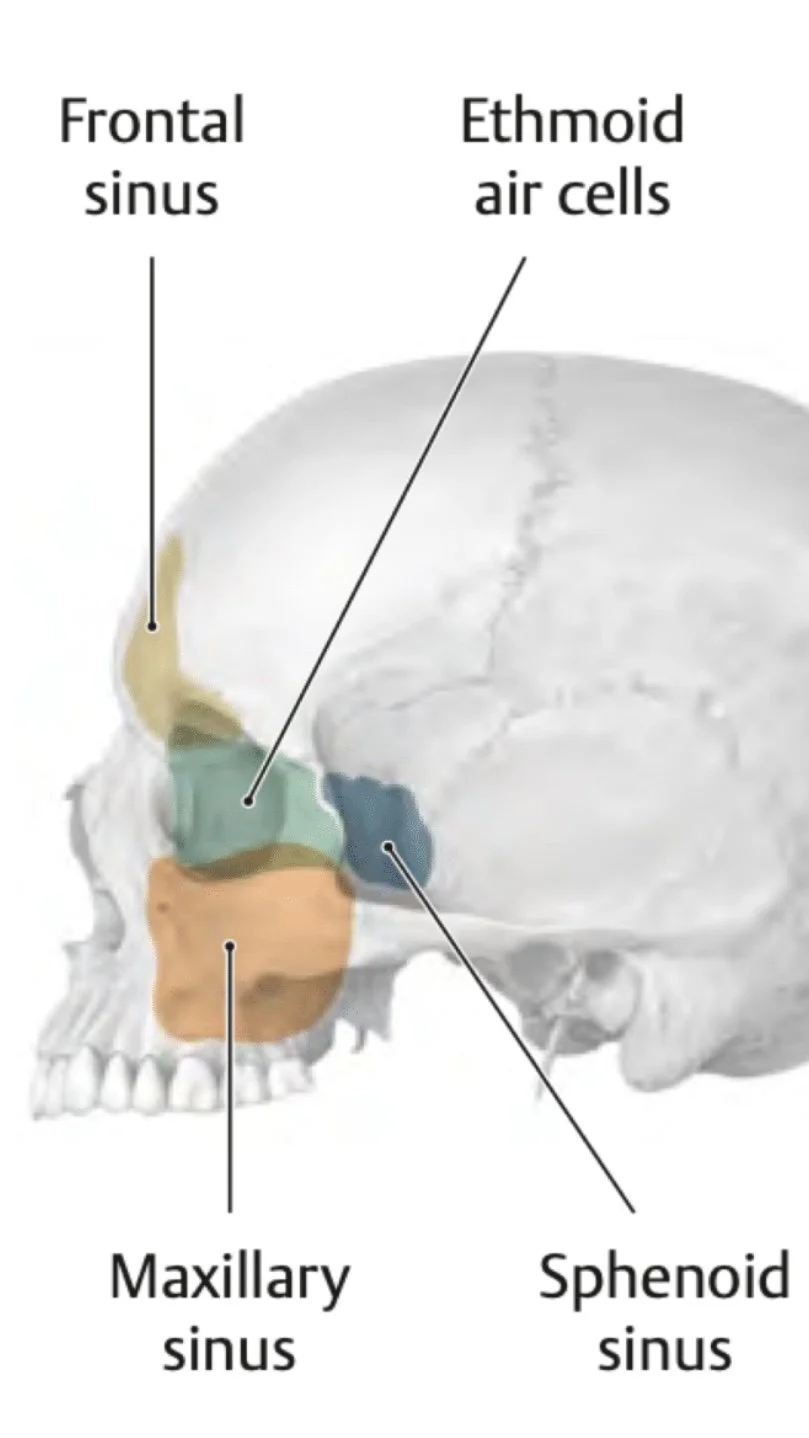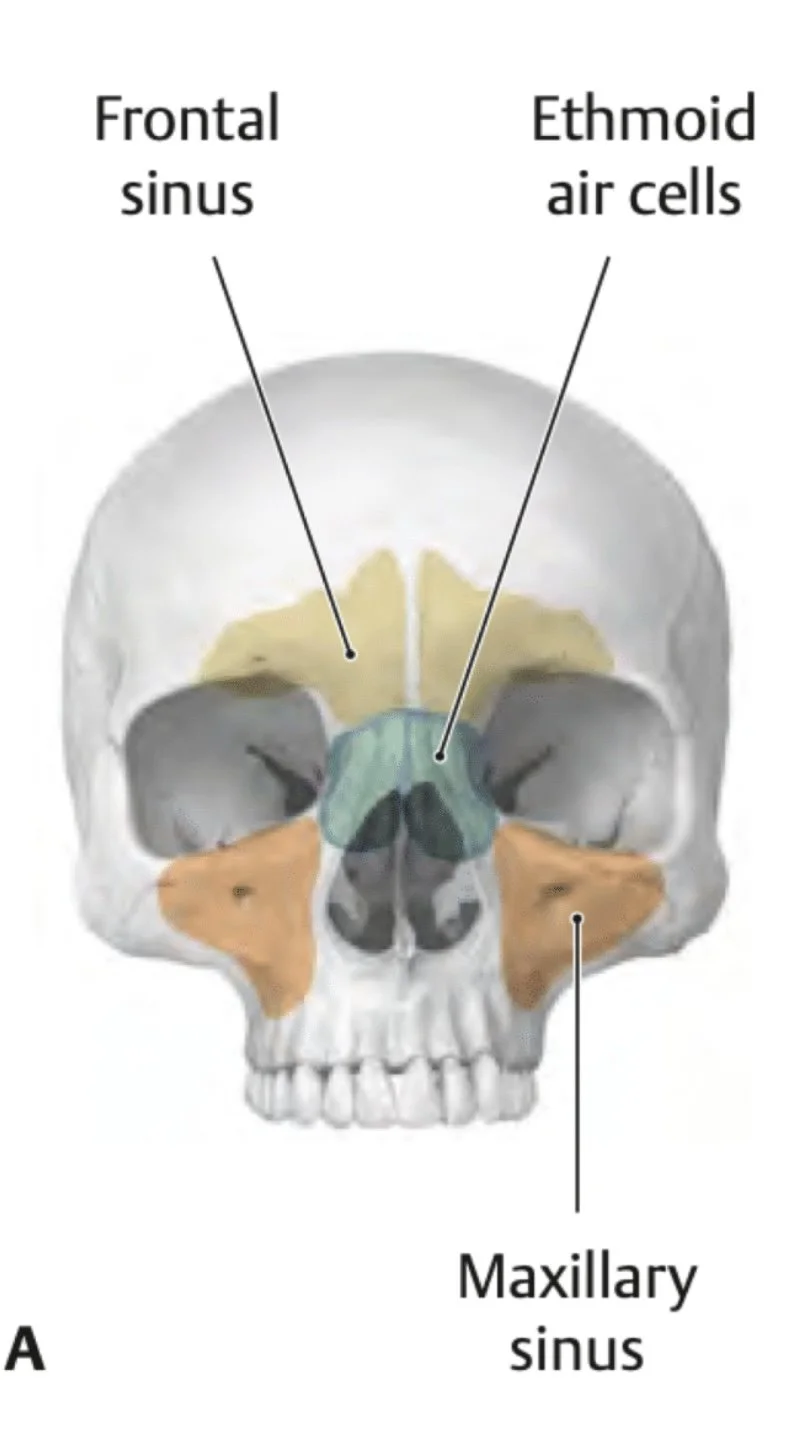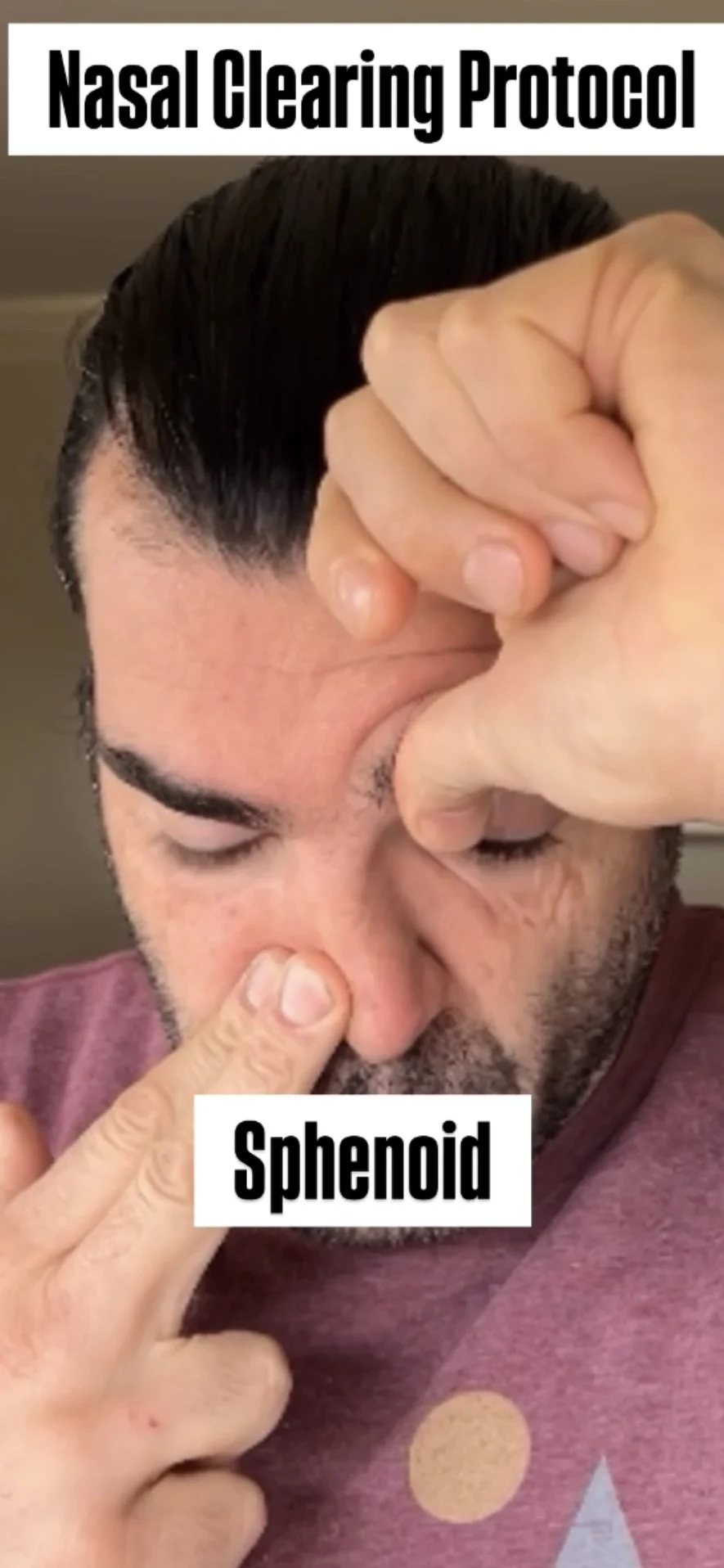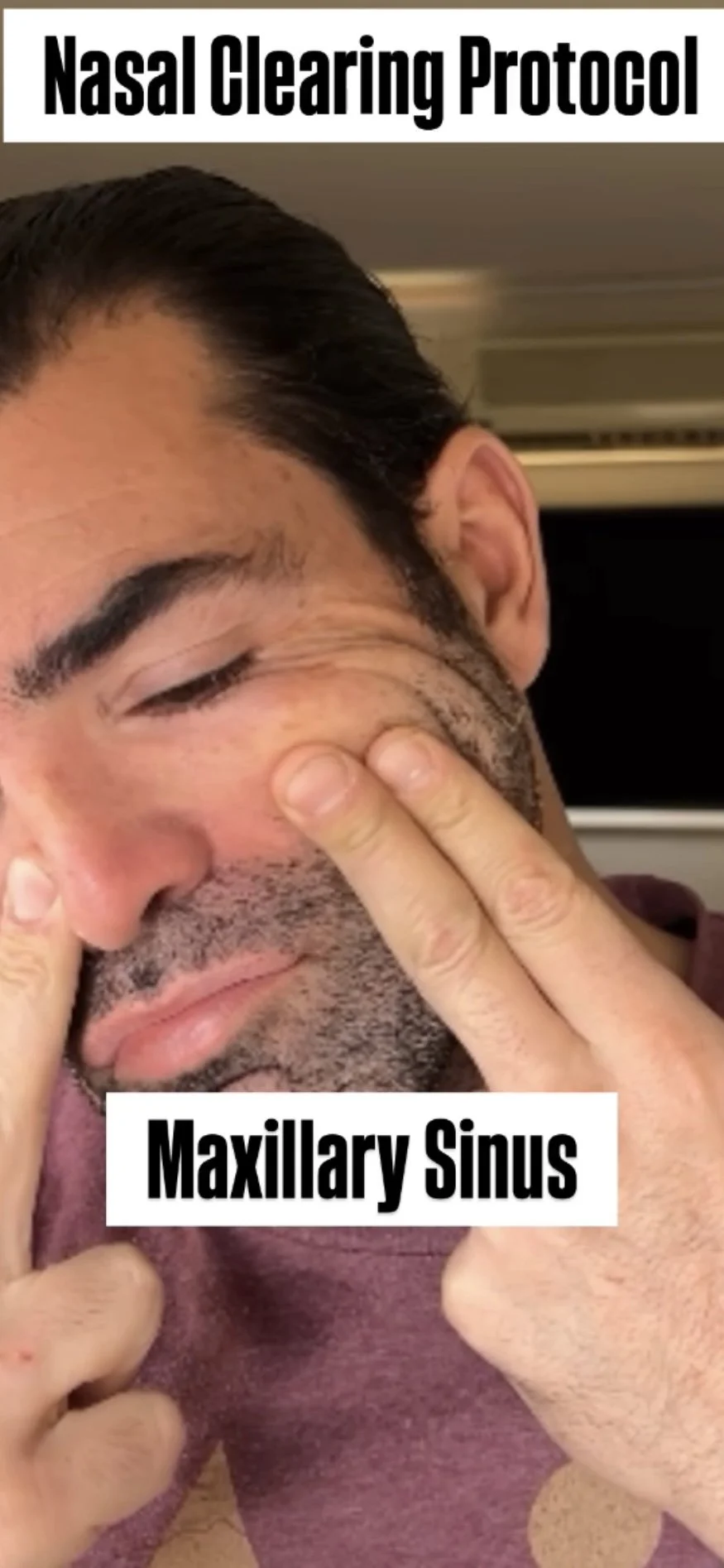Breathe Easy: A Sinus Self-Clearing & Palpation Guide
By Riccardo Galeotti, Therapist | The Body Lab, Canberra
Your go-to routine for clearer breathing, reduced sinus pressure, and feeling less like a balloon head.
Ever feel like your head’s full of wet cement? Or your nose is doing an impression of a blocked drain? Whether it’s allergies, post-nasal drip, or Canberra’s ever-dramatic climate, your sinuses might be begging for a little TLC.
This guide gives you a safe, research-informed method to release sinus pressure, reduce congestion, and support better breathing—using your own two hands.
And yes, science backs this up.
Why Manual Sinus Release Works (and Isn’t Just Witchcraft)
Your sinuses are air-filled cavities tucked inside your face bones. When functioning well, they warm, filter, and humidify the air you breathe. But when inflamed, congested, or misaligned (hello, poor posture and dry weather), they can’t drain properly—and that leads to pressure, pain, and mouth breathing misery.
Manual sinus release has been shown to:
Improve sinus drainage and reduce inflammation [3]
Support autonomic nervous system regulation [4]
Improve nasal airflow resistance [5]
Reduce facial muscle tension [6]
Prime Before You Palpate: Open the Airways First
Before diving into sinus pressure work, give your airways a head start with a natural decongestant. This sets the stage for better results when you start pressing and exhaling.
Your options:
1. Peppermint Oil or Olbas Oil
These oils contain menthol, which activates cold-sensitive TRPM8 receptors in the nasal mucosa. This doesn’t shrink tissues (like medicated sprays), but it does create the sensation of better airflow—and that’s enough to prime your system and relax tension [1].
How to use:
Add 2–3 drops to hot water and inhale the steam (towel over head optional).
Use in a diffuser before bed.
Or dab a small amount (diluted in olive oil or another carrier oil) under the nose.
2. Vicks or Similar Chest Rub
Vicks contains menthol, camphor, and eucalyptus—all of which improve perceived nasal airflow and reduce tension [2].
How to use:
Apply to the chest, upper neck, or under the nose.
Use baby-safe or diluted versions for children.
3. Blow Before You Go
Once the sinuses are softened and relaxed, gently blow your nose. You’re clearing the runway before takeoff—getting rid of surface mucus so the deeper stuff can drain properly.
Step-by-Step Sinus Self-Clearing Routine
You’ll need:
✔️ Clean hands
✔️ A mirror
✔️ A face
✔️ A willingness to breathe through your nose (even if it’s stubborn)
How many Sinus do we have?
Let’s talk sinuses — because yes, you’ve got more than one, and no, they’re not just there to make you sound like a foghorn when you’re sick. We actually have four main sinus groups: the frontal (in your forehead), ethmoid (between your eyes), maxillary (behind your cheeks), and the sphenoid (deep behind your nose and eyes, where things get real mysterious).
These air-filled chambers do more than lighten your skull and help you hit the high notes in the shower. They humidify incoming air, protect against pathogens, and quietly drain mucus through small passages into your nose. But when drainage gets blocked — thanks to inflammation, congestion, or structural quirks — things can get backed up fast.
Think pressure, headaches, facial tension, and that charming “I can’t breathe through my nose” feeling. That’s why supporting natural sinus drainage, whether through breathwork, cranial release, or movement, isn’t just a nice-to-have — it’s essential maintenance for your headspace
1. Frontal & Ethmoid Sinuses (forehead and between the eyes)
Helps with:
Pressure behind the eyes
Brain fog
Congestion at the bridge of the nose
How to do it:
Place your index finger between your eyebrows.
Apply gentle circular pressure for 5–10 seconds.
Then exhale firmly through your nose.
Repeat 2–3 times.
Gentle pressure over the supraorbital foramen can stimulate sinus drainage and influence trigeminal nerve activity [5].
2. Sphenoid Sinus
(deep behind the nose and eyes)
Helps with:
Pressure behind the eyes
Deep sinus congestion
Headaches at the base of the skull or temples
How to do it:
Place your thumb just under the brow bone, near the upper nasal wall.
Press upward and slightly inward.
Tilt your head slightly forward.
Hold for 5 seconds.
Exhale through your nose and release.
Repeat 3–5 times.
Cranial motion may affect sphenoid sinus function. Manual techniques can help decompress this deep cavity [6].
3. Maxillary Sinus (cheeks)
Helps with:
Facial fullness
Post-viral gunk
Mouth breathing
How to do it:
Place thumbs just below your cheekbones, beside the nose.
Press in and slightly up toward the cheekbone.
Massage in circles or hold 5–10 seconds.
Exhale through the nose as you release.
Repeat 2–3 times per side.
Maxillary sinus massage supports drainage and reduces nasal resistance [7].
Watch how to know clear the blocked Sinus
How Often Should You Do This?
1–2x per day when congested
After exposure to dust, pollen, or cold wind
Before bed to improve nasal breathing
Paired with light walking to reset your nervous system
If it takes more effort to push air out of your nose than it does to find a car park in Braddon on a Friday, it’s time to give this a go.
Who This Is Helpful For
✅ Chronic sinusitis
✅ Allergy or post-viral congestion
✅ Mouth breathing
✅ Sleep-disordered breathing
✅ Kids with facial or jaw tension
✅ TMJ dysfunction or blocked nasal passages
Need More Than a DIY Fix?
Sometimes your sinuses aren’t just inflamed—they’re structurally stuck.
At The Body Lab, we use:
Cranial therapy to release sinus & occipital tension
Manual tongue and hyoid release
Breathing retraining & facial mobility
Movement therapy to keep things flowing long-term
We work with adults and kids. And yes, we’ve had tiny humans leave breathing like dragons. (Looking at you, George.)
Want to Learn More?
Come visit us at The Body Lab in Canberra for hands-on support.
We’ll help unblock your sinuses, your breathing—and that post-COVID brain fog too.
📍 The Body Lab – Ainslie, Canberra
📞 0432 785 135
References
Eccles R. Menthol and related cooling compounds. J Pharm Pharmacol. 1994;46(8):618–630.
Mason JR, Dawes C, Leach J. Topical menthol: effects on nasal air flow and perception of nasal patency. Clin Otolaryngol. 1993;18(6):485–489.
Bezerra L, Carvalho J, Barbosa E, et al. Manual therapy and myofascial release in the treatment of rhinosinusitis: a randomized clinical trial. Man Ther. 2012;17(6):512–518.
Bordoni B, Varacallo M. Anatomy, Head and Neck, Sinuses. StatPearls [Internet]. 2023.
Lee S, Song H, Lee J. The effect of acupressure on facial pressure points for sinusitis: a pilot study. J Altern Complement Med. 2020;26(4):332–337.
Upledger J, Vredevoogd J. Craniosacral Therapy. Seattle: Eastland Press; 1983.
Abu-Bakra M, Jones NS. The prevalence of nasal disease in chronic maxillary sinusitis. Clin Otolaryngol. 2001;26(5):373–376.






